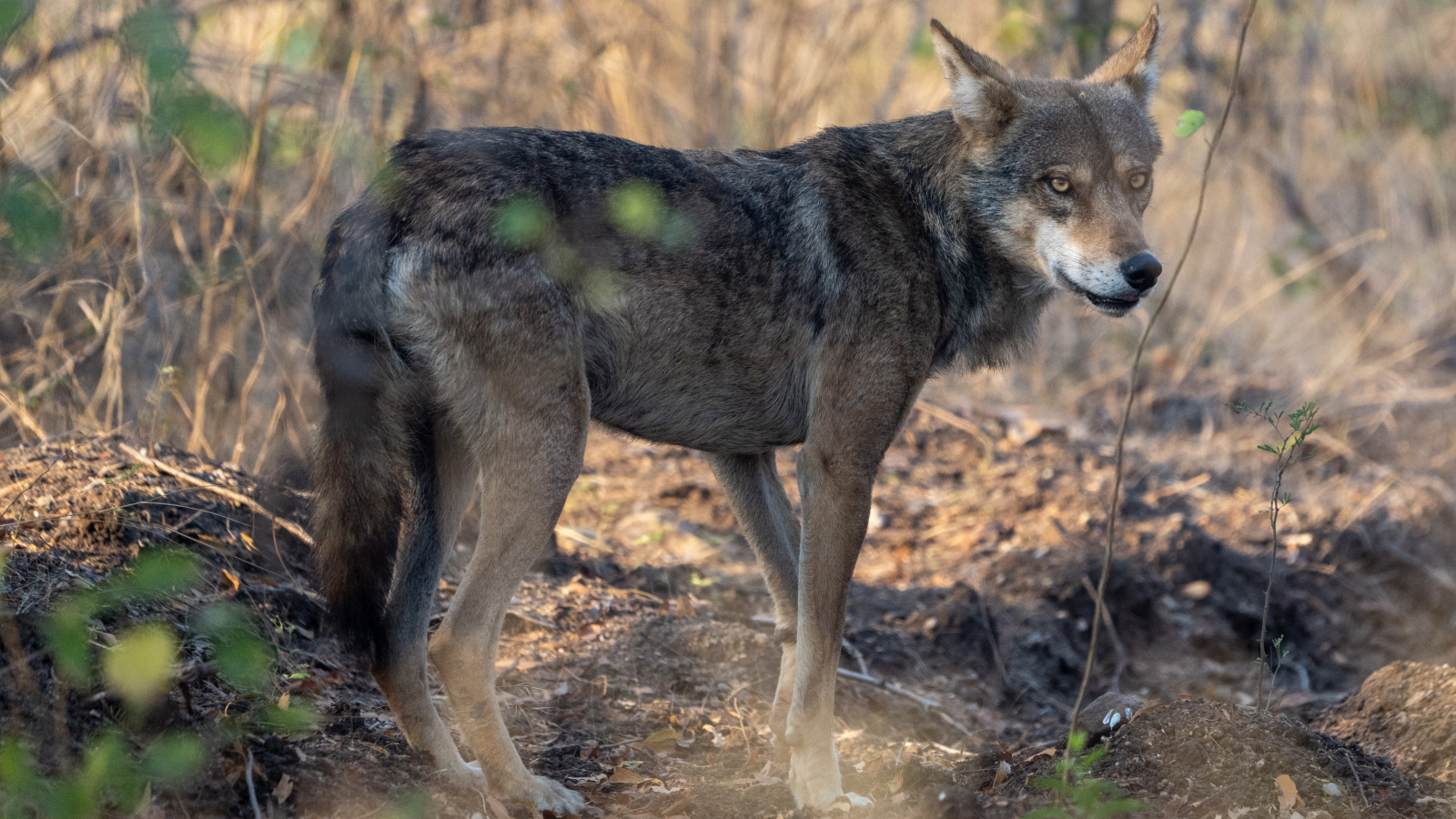'All it takes is a predator to learn that children are easier prey': Why India's 'wolf' attacks may not be what they seem
Indian authorities believe wolves have killed 10 people in the Bahraich region of Uttar Pradesh in recent months, as fear and confusion grips local villages.

Indian authorities are trying to capture the last member of a wolf pack they believe is responsible for killing children in northern India. But there are still many unanswered questions surrounding the attacks — and some experts are waiting for definitive evidence that the wolves are to blame.
Nine children and one adult have reportedly been killed in suspected wolf attacks in the Bahraich area of Uttar Pradesh in recent months, with dozens more injured. News reports described Indian wolves (Canis lupus pallipes) taking children who were sleeping out in the open and entering homes to drag victims from their beds.
The Uttar Pradesh forest department deployed drones equipped with thermal imaging and traps to capture five of the six wolves living in the area, but one remains at large — and reports of attacks are continuing.
"The authorities are still searching for one wolf as of today," Akash Deep Badhawan, an officer in the Indian Forest Service who led the search operation for a week before becoming ill, told Live Science in an email on Wednesday (Sep. 18).
The authorities face many challenges in their pursuit of the final wolf. Badhawan said the landscape featured sugar cane farms, which provide cover for the wolf, while other animals in the wolf, or dog, family (Canidae) also live there, making a single wolf very difficult to identify.
Related: 'She is so old': One-eyed wolf in Yellowstone defies odds by having 10th litter of pups in 11 years
News reports have presented a variety of potential motives for the attacks, including that the wolves are seeking "revenge" against humans for harming their pups. However, there's no evidence that wolves engage in such behavior.
Sign up for the Live Science daily newsletter now
Get the world’s most fascinating discoveries delivered straight to your inbox.
Wolves don't seek revenge, Yadvendradev Jhala, a wildlife biologist at the Indian National Science Academy, told Live Science in an email. Instead, he believes this is an extremely rare case of an individual canid carrying out predatory attacks "to kill and eat" humans.
In articles for India Today, Jhala wrote that packs of canids usually tear their prey apart while a single canid kills with a bite to the throat or nape, like the bites seen on most of the Bahraich victims, so it's unlikely a pack of wolves was hunting people.
Wolves and other predators don't normally hunt humans. However, they may lose their fear of people and kill if they're starving or if they become overly familiar with us, Jhala noted. Wolves can become less fearful of humans when we feed them, keep them as pets or allow them to breed with domestic dogs.
Uttar Pradesh: Bahraich Forest Department catches the wolf that killed 8 people in Bahraich. pic.twitter.com/8lw874dvpkAugust 29, 2024
The residents of Bahraich are more vulnerable to attacks than most because they live in close proximity to wildlife. It's also a very poor area, often lacking proper housing, doors and toilets. When food is scarce, predators such as wolves can learn that human children in these areas are easy pickings compared to the few wild prey animals that may or may not be around.
"All it takes is a predator to learn that children are easier prey than anything else, and if they're starving and dying and they get an opportunity to kill a child, I think the fear of humans takes a backseat," Jhala said.
India has experienced surges in wolf attacks in the past. At least 13 children died during what were believed to be wolf attacks in Bihar between 1981 and 1982, and an even deadlier wave claimed the lives of at least 38 children in Uttar Pradesh in 1996, BBC News reported.
Beginning of the attacks
The current wave of suspected wolf attacks began in March, when a 3-year-old girl was taken while she slept alongside her mother in a field in Mahsi tehsil, within Bahraich, Telegraph India reported. The next attacks weren't until July.
"In March, we saw a couple of mysterious 'abductions' but it was quiet for the next three months," Ajeet Singh, a district forest official, told the Independent. "On 17 July, the horror repeated with another child being attacked."
"We realised that these wolves have developed a taste for human flesh and that we are in deep trouble," he added.
The confirmed fatalities included a 1-year-old boy who was sleeping outside with his family due to a power outage, Mongabay reported. Authorities believe wolves are responsible for the attacks because drone footage captured a pack of wolves in the area. Singh told Mongabay on Friday (Sep. 13) that the presence of the wolves coincided with the attacks, and they were confident that the wolves were involved.
But not everyone is convinced.
Misidentification
In addition to golden jackals (Canis aureus), there are also feral dogs and wolf-dog hybrids in the region. All of these canids can bite humans, leading to confusion about which animal is responsible for any given attack. Jhala noted that while the attacks are by canids, it's unclear which type is responsible.
"They could be by a wild wolf, a pet wolf let loose, a wolf dog-hybrid or possibly even feral dogs," Jhala said. "Without a photo, clear pug marks [footprints] or DNA from hair or saliva or remains of humans from the feces of captured wolves, how can we be certain that it is a wild wolf pack attacking humans?"
Shaheer Khan, a wolf biologist at the Wildlife Institute of India, has visited the affected area to understand the situation. He told Live Science in an email that the area has a high density of jackals and feral dogs. "Many attacks were misidentified as wolf attacks," he said.
Mixing up wolves and other canids is easy, particularly at night. Arjun Srivathsa, a researcher at the National Centre for Biological Sciences in India who studies canid-human interactions, told Live Science that identification can be confusing.
"From all our research experience in central and south India, we know that people often confuse canid species and even the big cats (tiger vs leopard)," Srivathsa said.
Both Srivathsa and Jhala described media coverage of the recent canid attacks as sensationalism. Jhala also noted that tigers, leopards, elephants and snakes all kill more people than wolves. And all of those animals combined are responsible for fewer deaths than cars.
"Society looks upon road accidents and deaths caused by them as a routine thing, but an animal attack and death by animals is looked upon as a rarity, and that's why it makes the headlines," he said.

Patrick Pester is the trending news writer at Live Science. His work has appeared on other science websites, such as BBC Science Focus and Scientific American. Patrick retrained as a journalist after spending his early career working in zoos and wildlife conservation. He was awarded the Master's Excellence Scholarship to study at Cardiff University where he completed a master's degree in international journalism. He also has a second master's degree in biodiversity, evolution and conservation in action from Middlesex University London. When he isn't writing news, Patrick investigates the sale of human remains.










